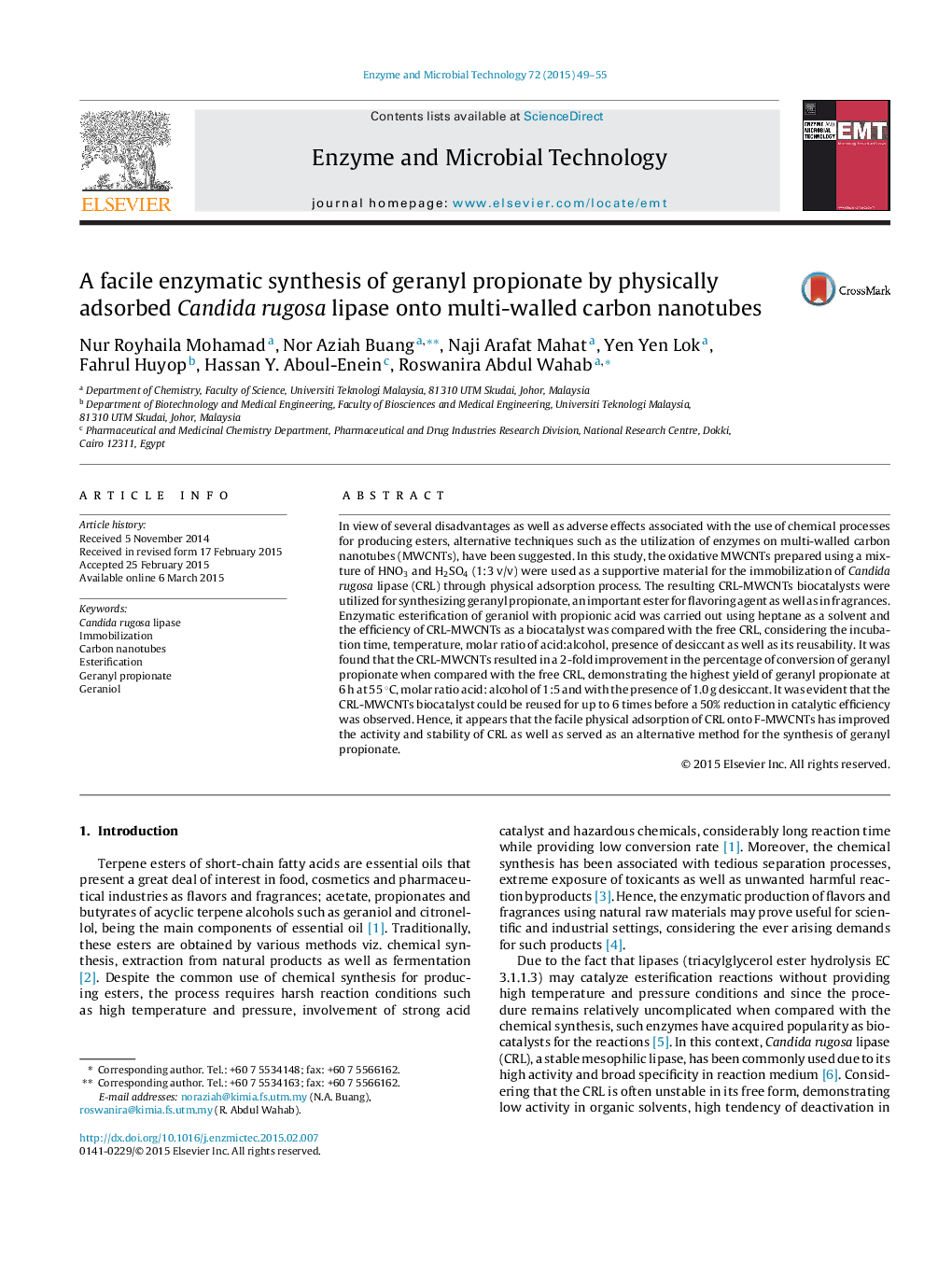| Article ID | Journal | Published Year | Pages | File Type |
|---|---|---|---|---|
| 16884 | Enzyme and Microbial Technology | 2015 | 7 Pages |
•Physically adsorbed CRL on MWCNTs improved production of geranyl propionate.•Enzyme activity improved as much as 2-fold for CRL-MWCNTs over free CRL.•Highest yield: 6 h (55 °C), molar ratio acid:ROH 1:5, 1.0 g desiccant, reusable 6 times.
In view of several disadvantages as well as adverse effects associated with the use of chemical processes for producing esters, alternative techniques such as the utilization of enzymes on multi-walled carbon nanotubes (MWCNTs), have been suggested. In this study, the oxidative MWCNTs prepared using a mixture of HNO3 and H2SO4 (1:3 v/v) were used as a supportive material for the immobilization of Candida rugosa lipase (CRL) through physical adsorption process. The resulting CRL-MWCNTs biocatalysts were utilized for synthesizing geranyl propionate, an important ester for flavoring agent as well as in fragrances. Enzymatic esterification of geraniol with propionic acid was carried out using heptane as a solvent and the efficiency of CRL-MWCNTs as a biocatalyst was compared with the free CRL, considering the incubation time, temperature, molar ratio of acid:alcohol, presence of desiccant as well as its reusability. It was found that the CRL-MWCNTs resulted in a 2-fold improvement in the percentage of conversion of geranyl propionate when compared with the free CRL, demonstrating the highest yield of geranyl propionate at 6 h at 55 °C, molar ratio acid: alcohol of 1:5 and with the presence of 1.0 g desiccant. It was evident that the CRL-MWCNTs biocatalyst could be reused for up to 6 times before a 50% reduction in catalytic efficiency was observed. Hence, it appears that the facile physical adsorption of CRL onto F-MWCNTs has improved the activity and stability of CRL as well as served as an alternative method for the synthesis of geranyl propionate.
Graphical abstractFigure optionsDownload full-size imageDownload as PowerPoint slide
